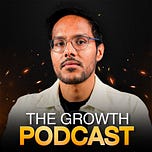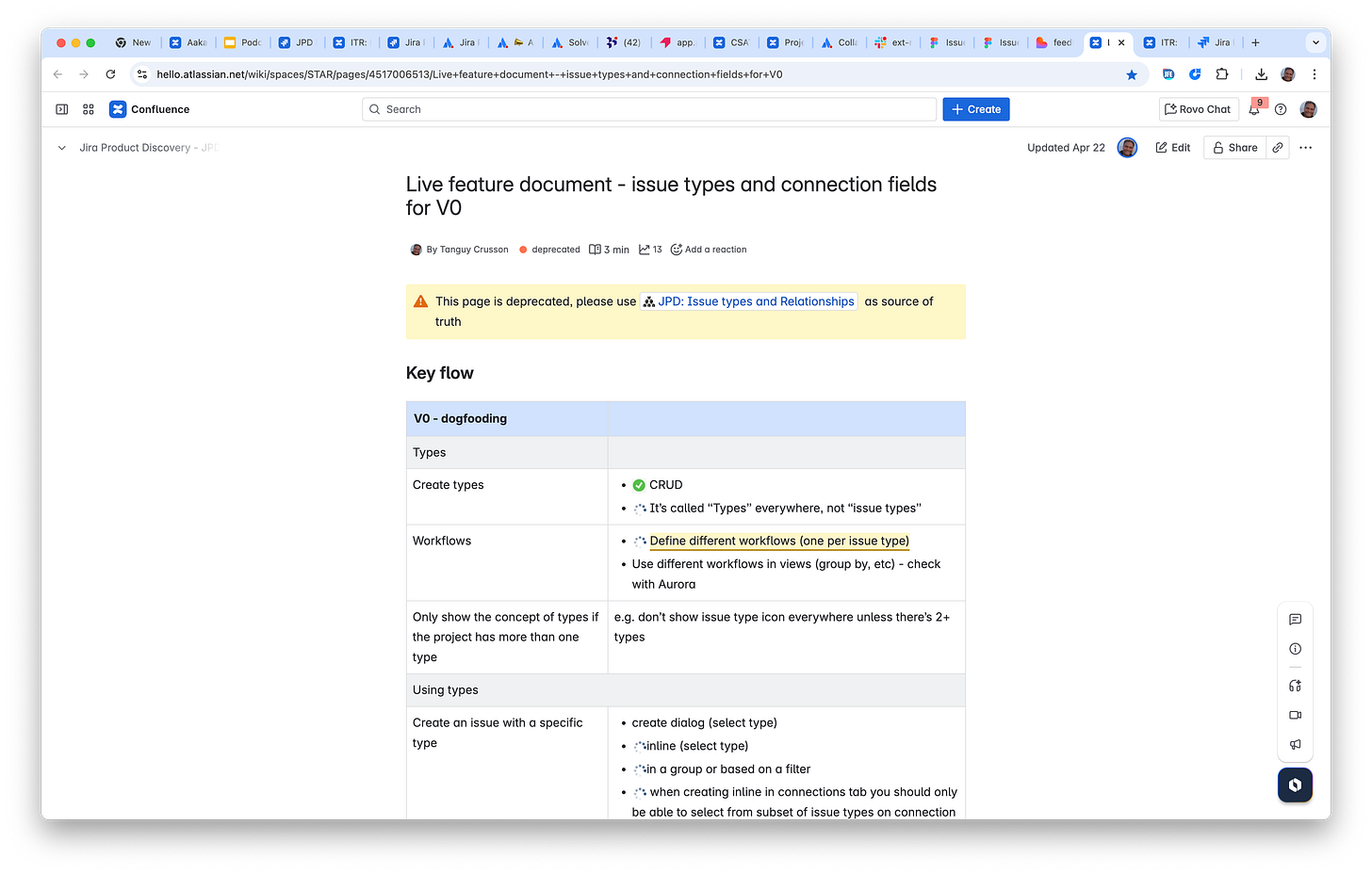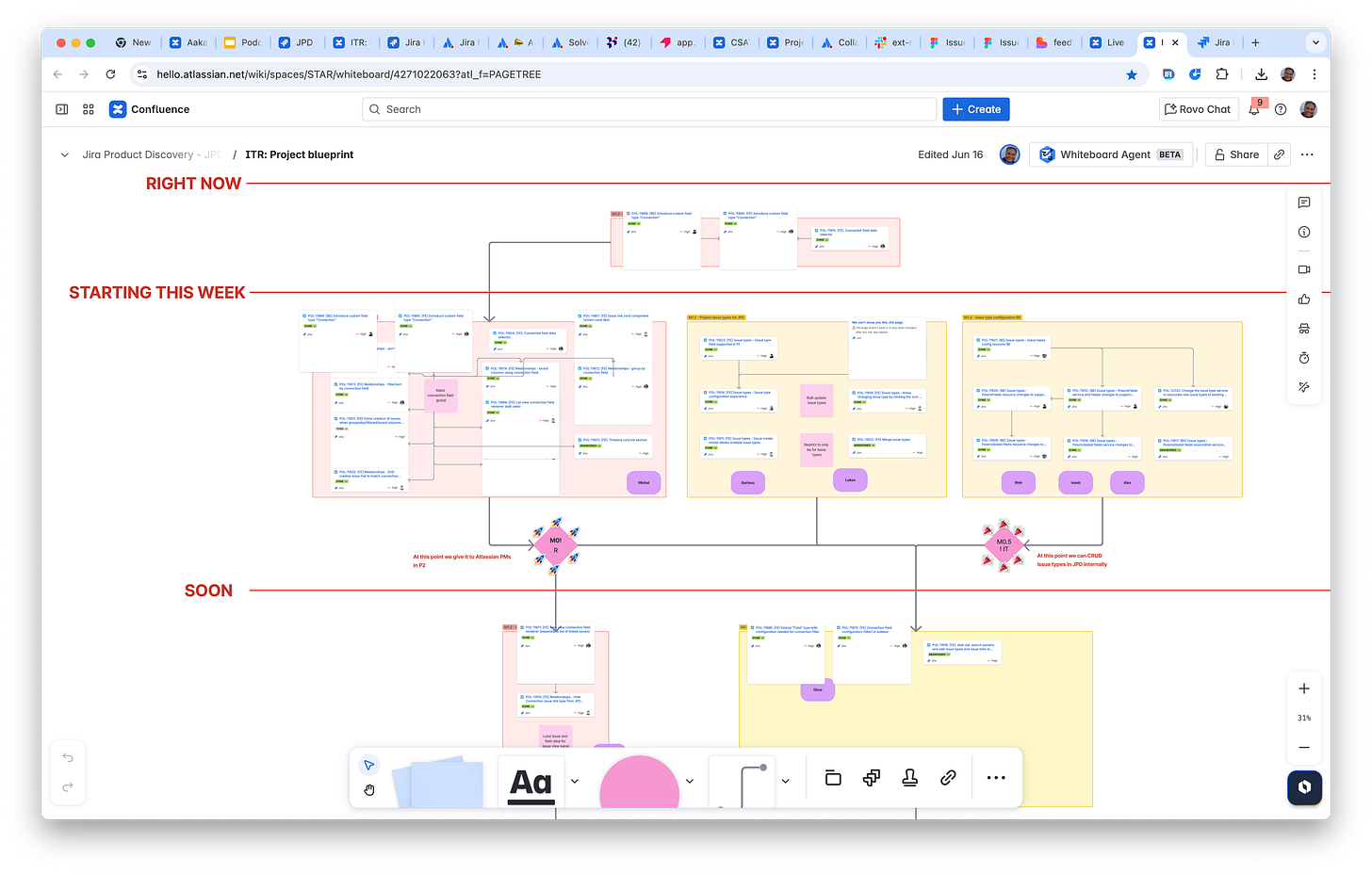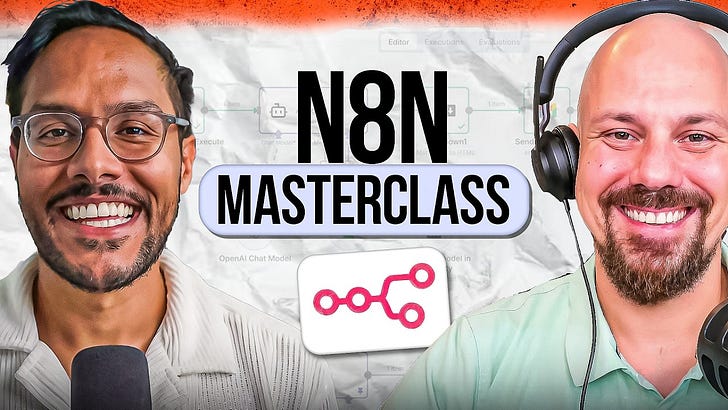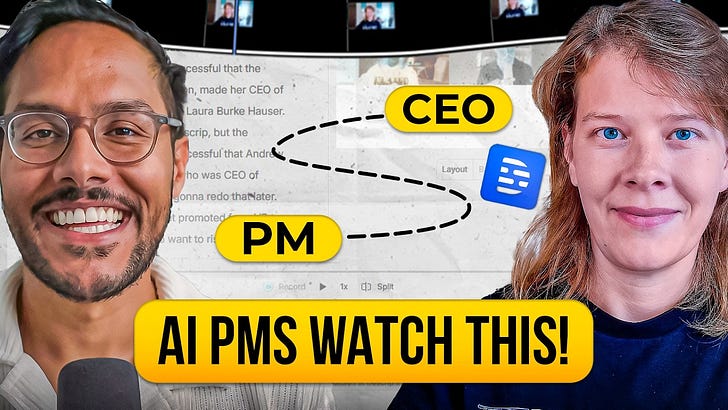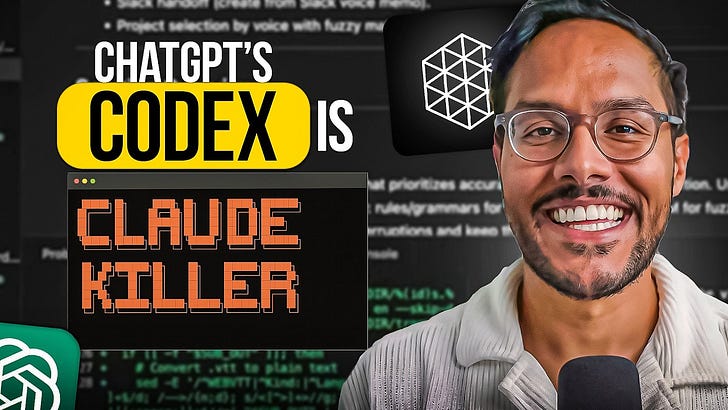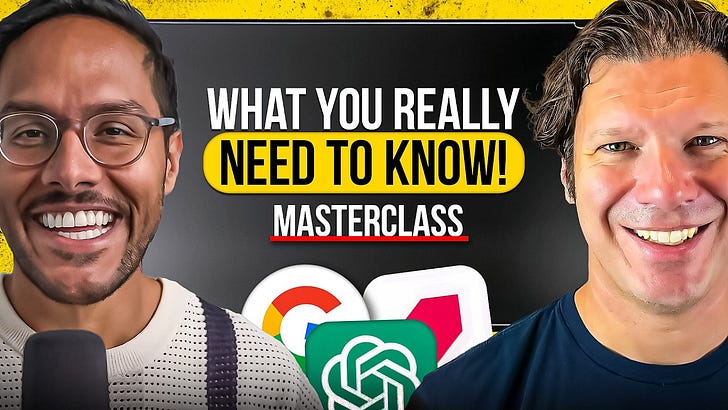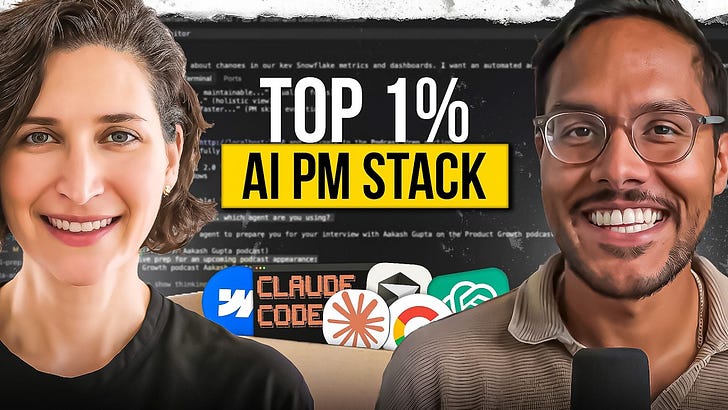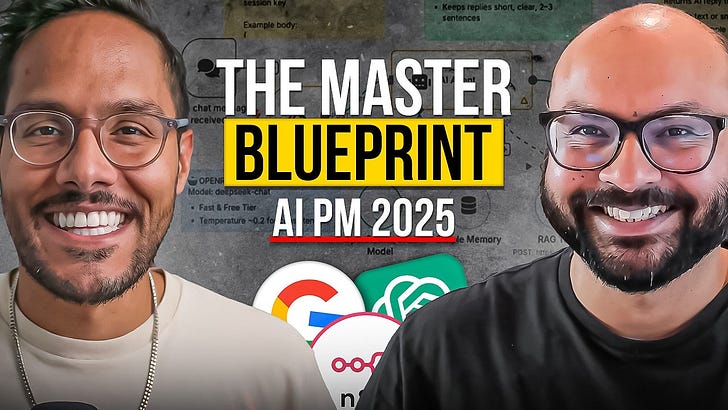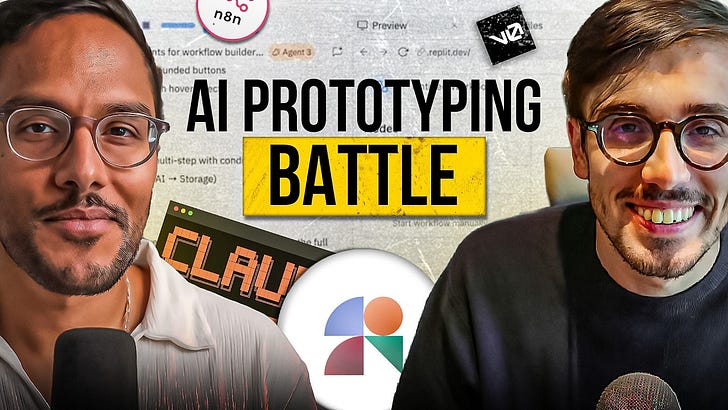Check it out on Apple, Spotify, or YouTube.
Brought to you by:
Jira Product Discovery: Plan with purpose, ship with confidence
Product Faculty: Get $500 off the AI PM certification with code AAKASH25
Vanta: Automate compliance, security, and trust with AI (Get $1,000 with my link)
AI Evals Course for PMs & Engineers - Get $800 off with this link
Today’s Episode
There’s so much talk about AI but very few practical examples how to do it all together.
Today, we’ve got a treat.
A practical walkthrough of using AI in all stages of product discovery.
And we’ve got it with on of my favorite product management voices in the world, Tanguy Crusson. This guy really gets what it takes to build valuable products that users love to user and positively impact the business growth.
You’ll learn:
How to use AI at all 4 stages of Wonder → Explore → Make → Impact
What most PMs get wrong about discovery (and how to fix it)
Why Tanguy hasn’t written a PRD in 5 years
If you’ve ever thought, “Damn, we could’ve done better discovery on that…”, this episode is for you. (He’s also sharing the one most important thing he learned from Reforge - you’ll have to watch the episode for that 😃)
P.S. The audio episode here on Susbtack and on Apple is longer than the video on YouTube! We did a longer conversation there. The masterclass with slides is on YouTube and Spotify.
AI Product Discovery: Complete Course Notes
Here’s what we cover:
How AI Has Changed the Product Discovery Landscape
How Atlassian Does Product Discovery (See Internal Processes for the First Time)
Leveraging Marty Cagan’s Four Types of Risk
How the Team Embeds Discovery Every Day
1. How AI Has Changed the Product Discovery Landscape
According to Tanguy, AI hasn’t replaced product discovery!
But it’s fundamentally changing how fast, how deeply, and how widely we can do it.
Here are the few ways:
1.1. Prototyping Fast
Prototyping has totally changed for PMs:
Instead of sketching ideas on napkins or Figma from scratch…
PMs now use AI-powered tools like V0, Bolt, and Lovable to generate high-fidelity prototypes in minutes.
These prototypes feel real enough to test - helping teams gather feedback faster, before investing engineering effort.
His team shows prototypes to users in Zoom calls within hours.
No pixel-perfect polish. Just raw, testable ideas.
1.2. Accelerated Research (Without Losing Depth)
AI now handles the grunt work of early research:
Competitive analysis across messaging, positioning, and user sentiment
Summarizing internal CSAT feedback and pulling top user themes
Querying historical customer conversations in Confluence or Gong
This means PMs spend less time on spreadsheets and more time asking better questions.
Also, he thinks the best investment you can make in your career as a PM is to learn how to conduct user interviews from a real researcher and expert.
1.3. Smarter Customer Targeting aka profiling
Before a user call, he asks AI:
“Tell me everything we know about this customer across the Atlassian suite.”
Within seconds, he gets a summarized context across multiple touchpoints so he walks into the conversation with clarity and precision.
1.4. Bridging the Feedback Gap
One of the most exciting possibilities?
AI helping PMs go straight to the source — bypassing layers of translation from sales, support, or CSMs.
Instead of: “The sales team said customers want X…”
Imagine: Plugging into raw Zoom recordings or Gong clips → surfacing exact user pain → clipped for your roadmap.
We're not fully there yet. But this is the next frontier… AI as your discovery assistant, not just a summarizer.
Still, he offers a warning: AI can’t replace your judgment.
“Your brain is the best LLM”
2. How Atlassian Does Product Discovery (See Internal Processes for the First Time)
A complete guide from inside the Jira Product Discovery team
Product discovery at Atlassian isn't a one-time research phase.
It’s a full-stack discipline infused into every stage of the product lifecycle.
And what makes it powerful is how simple, human, and repeatable it is, no matter your team size.
Here’s a breakdown of how they do it.
The 4 Stages of Product Discovery at Atlassian
Atlassian’s team uses a shared vocabulary across the company to track where any initiative is in the discovery journey.
The four stages are:
1. Wonder (Problem Exploration)
2. Explore (Solution Exploration and Validation)
3. Make (Committed Building and Scaling)
4. Impact (Measuring and Iterating Post-release)
This isn't a rigid waterfall.
Teams move fluidly between stages based on what they learn.
But these labels help the entire company understand what’s being worked on and what kind of support it needs.
1. Wonder – Finding the Right Problem
The Wonder phase is about uncovering user pain (not what you think is the problem) before even thinking about solutions.
Here’s how it works:
The team conducts 10–15 deep user interviews focused on a specific theme (e.g. roadmapping, dependencies, visibility).
Instead of long writeups, they compile under-10-minute video reels from real user clips showing frustration, confusion, or workarounds.
These videos are shared with the team in silence-first meetings. Everyone watches, absorbs, and feels the problem.
Here’s what you’ll find in the video demo:
The PM, Hermance, showcased a page with three clearly defined problem areas for different personas: product ops, program management, stakeholders, and PMs, supported by user interview video snippets to directly illustrate the issues.
2. Explore – Validating the Right Solution
Once a problem feels real and pressing, the team begins light prototyping.
Rules of the game:
Speed over polish: They use Figma, slides, or even AI tools like V0 to test early concepts.
Test with the same users from the Wonder phase.
Look for strong signal — not politeness. If users pull the solution toward their real-world workflow, it's working.
Here’s what the demo will teach you:
Outlining PM tasks like a pro (e.g., prioritization, feedback collection, stakeholder alignment).
A Gmail-style inbox for managing feedback (initially lukewarm reception) so you don’t miss out on key details
A prioritized idea-list UI, which generated enthusiastic user reactions and validated a clear need ( steal it)
3. Make – Committing to Build
Once a solution shows real pull, the team pitches to move into “Make.”
Here’s what happens:
They expand from 10 → 100 → 1000 users incrementally.
Development begins — but still with validation checkpoints at every step.
They avoid overbuilding by shaping appetite to match commitment. If priorities shift, they pause. Nothing is sacred.
This phase is where PMs, designers, and engineers work tightly.
Still watching user behavior, not just outputting code.
You’ll see the full process of:
A clear articulation of how ideas move from Explore to Make, based on validation strength (most people miss this)
Use of internal Jira Product Discovery tools to manage roadmap commitments and communicate progress internally.
4. Impact – Measuring What Actually Works
After launch, the team enters “Impact”, a post-release learning phase.
They ask:
Did the feature solve the original problem?
Are people using it the way we hoped?
Is it worth iterating, retiring, or scaling further?
You’ll learn how:
They track real usage, run follow-up interviews, and revisit their bets monthly.
Recommendations and plans for the next steps.
No success theater. Just: “Did this move the needle?”
3. Leveraging Marty Cagan’s 4 Types of Risks
Tanguy’s approach is heavily influenced by the Marty Cagan’s way of doing product discovery and also validating the 4 types of risks:
Value
Ensuring customers genuinely derive value from what you're creating. Your idea might seem great, but customers could look at it and be like “Thank you, next” or simply not use it.
Usability
Verifying that the product is easy for users to find and interact with. This ensures that your "awesome" feature doesn’t go unused if it's hidden or too difficult to operate.
Feasibility
Determining if the idea is technically possible to build with current technology and resources. An amazing concept might not be viable if your underlying tech isn't yet available.
Viability
Confirming that the solution is viable for your specific business context, considering factors like team size.
4. How the Team Embeds Discovery Every Day
Atlassian’s discovery mindset isn’t limited to one PM or a quarterly project.
It’s operationalized:
Weekly PM rotation: One of four PMs reviews all user feedback each week — from Jira Service Desk, Pendo, Slack, and community groups.
All feedback is tagged to ideas: If it’s new, it gets tagged as an insight inside Jira Product Discovery.
Monthly roadmap reviews: The PM team revisits what’s changed and what to explore next.
Direct Slack channels with users: PMs have 20+ customers on “speed dial” for instant questions and lightweight validation.
Tooling stack:
Dovetail → interview recordings, snippets, themes
Loom → async prototypes
Pendo → in-app feedback and quick tests
Gong → sales conversations
JPD → central idea-to-roadmap tracking
Plus, he’s spilling many stories around a engineer who were frustrated for not having decks and PRDs, why he has not written one in the last 5 years, and more.
You’ll enjoy it!
Learn More
Important Links Mentioned:
Tanguy walking you through how to use Jira to create hierarchies in JPD projects
Solving Users Problem Masterclass (It should be no wonder they’ve got 18k paying customers)
Where to Find Tanguy:
If you prefer to only get newsletter emails, unsubscribe from podcast emails here.
If you want to advertise, email productgrowthppp at gmail.
Related
Newsletters:
Podcasts:
Talk: The 5 Questions of Product Management
Up Next
If you enjoyed this crash course in AI product discovery, you’re going to love my upcoming episode with the godmother of discovery, Teresa Torres.
Stay tuned!
P.S. More than 85% of you aren't subscribed yet. If you can subscribe on YouTube, follow on Apple & Spotify, my commitment to you is that we'll continue making this content better.

